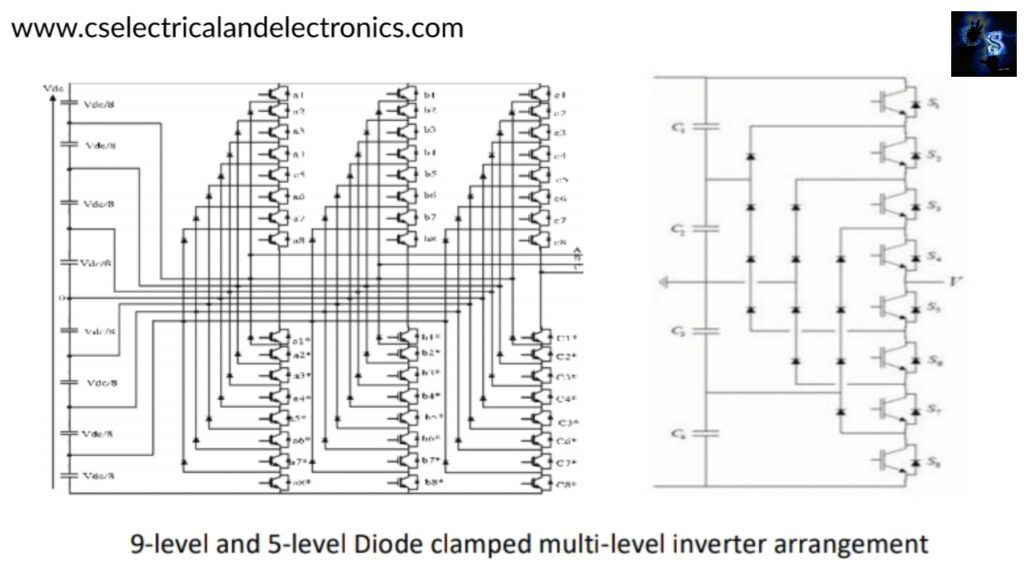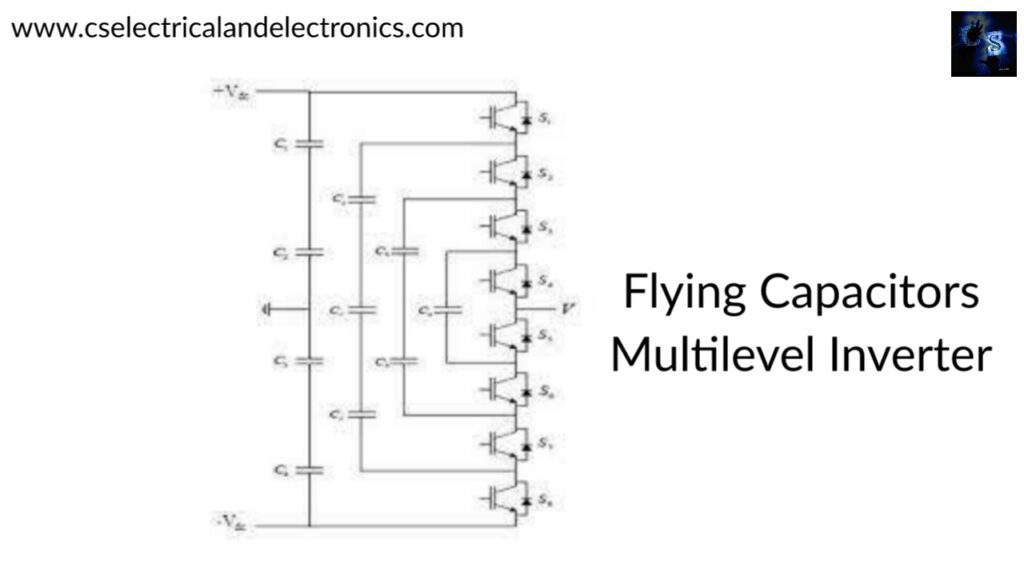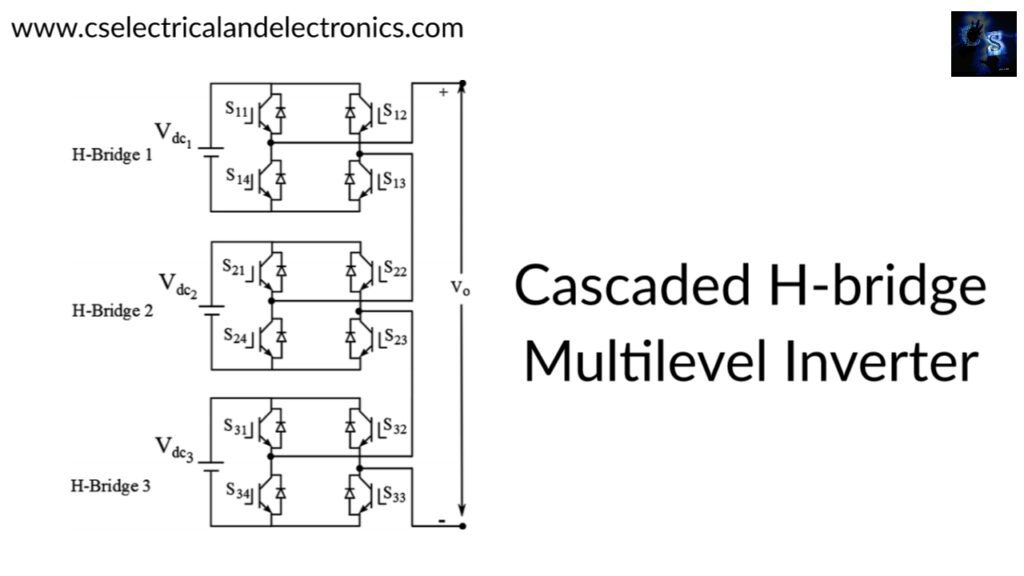Difference Between Cascaded H-Bridge, Flying Capacitors, Diode Clamped Multilevel Inverter
Hello guys, welcome back to my blog. In this article, I will discuss the difference between Cascaded H-bridge, flying capacitors, diode clamped multilevel inverters, what is cascaded H-bridge multilevel inverter, what is flying capacitors multilevel inverters, and what is diode clamped multilevel inverter.
If you have any electrical, electronics, and computer science doubts, then ask questions. You can also catch me on Instagram – CS Electrical & Electronics.
Also, read:
- Top 20 Projects On Proteus Software For Engineers, Diploma Students.
- 500+ Embedded System Projects For Engineer, Diploma, MTech, Ph.D.
- Top 10 YouTube Channels For Electronics And Communication Engineers.
Difference Between Cascaded H-Bridge, Flying capacitors, Diode Clamped multilevel inverters
Multilevel Inverter
The inverter is a device that converts the direct current (DC) into alternating current (AC). The generator is mainly used as an emergency backup during a power supply interruption and it has different types of applications. Increase in high power applications the inverters are not reaching their capacity, to reach their capacity and need Multi-level Inverters, are coming into availability.
Multi-level Inverters came into action in 1975 they are mainly used in industrial applications with high and medium voltage operations. There are several switches are used for the operation of the Multilevel inverters. There are mainly three types of Multi-level Inverters:
- Diode Clamped multilevel inverter
- Flying capacitors multilevel inverter
- Cascaded H-Bridge Inverter
Diode Clamped Multilevel Inverter

The Diode clamped multi-level inverter uses the diodes to provide multiple voltages through the different phases to the capacitor banks connected in series. The diode has a limited amount of voltage transfer capacity. This makes to draw the high input DC voltage and provides less output voltage. To cover this drawback more switches, diodes, and capacitors are used.
For a back-to-back power transfer system, the arrangement of switches is important and this type of inverter will provide high efficiency. The different types of arrangements of diode clamped are 5-level and 9-level arrangements. The main difference between the 9-level and 5-level is the switches, diodes, and capacitor banks used in the 5-level are doubled in the 9-level.
The 5-level diode clamped Multi-level inverters are used for medium voltage applications. The 9-level diode clamped Multi-level inverters are used for high voltage applications.
Level -5 provides the output as half of the input DC voltage but when coming to the level-9 arrangement the output voltage is doubled than the level-5 output voltage as the circuit arrangement is the series connection of two level-5 inverter circuits.
Flying Capacitors Multilevel Inverter

The Flying capacitor’s multilevel inverter working is the same as that of the diode clamped multi-level inverter. The capacitors will play a major role in the inverter as they are connected in the series. The switching states are the same as that of the diode clamped multi-level inverter but the diodes are absent here.
The switches will be reduced as the capacitors maintain a good stable balance in phase. The arrangements are the same as that of the diode clamped with 5-level and 9- level. The circuit arrangement uses only the switches and capacitors so the circuit complexity is decreased compared to the diode-clamped multi-level inverter.
The switching losses are high in this inverter as the high-frequency switching operations will take place. This multi-level inverter can control both the active and reactive power. It is also cost-effective with good efficiency.
Cascaded H-bridge Multi-level Inverter

The arrangement of the cascaded H-bridge multi-level inverter is done by the arrangement of the circuit as H-bridge. There are so many H bridge cells in this inverter. In one H-bridge cell, there are four switches and the four diodes connected together. The output of each cell has three types such as positive voltage, negative voltage, and zero.
This H-bridge arrangement is used in both single and multi-level inverters. In this inverter, each cell needs a separate input supply and the outputs are gathered together and given to the load. For phase connection, three H-bridges are connected as a Wye connection to form a single cell.
The main drawback of this H-bridge inverter is the switching process. The switching time lags and sometimes it becomes hard for the switching conditions. But there are so many modern technologies with which we can make possible soft switching.
The circuit arrangement is very easy and the cost is very less compared to the other two multi-level inverters. The cascaded H-bridge can be used on many levels. This is a more efficient multi-inverter compared to the other two.
This is about the difference between Cascaded H-bridge, flying capacitors, diode clamped multilevel inverters. I hope this article may help you all a lot. Thank you for reading.
Also, read:
- 10 Tips To Maintain Battery For Long Life, Battery Maintainance
- 10 Tips To Save Electricity Bills, Save Money By Saving Electricity
- 100 (AI) Artificial Intelligence Applications In The Automotive Industry
- 100 + Electrical Engineering Projects For Students, Engineers
- 1000+ Automotive Interview Questions With Answers
- 1000+ Control System Quiz, Top MCQ On Control System
- 1000+ Electrical Machines Quiz, Top MCQs On Electrical Machines
- 1000+ Electronics Projects For Engineers, Diploma, MTech Students

